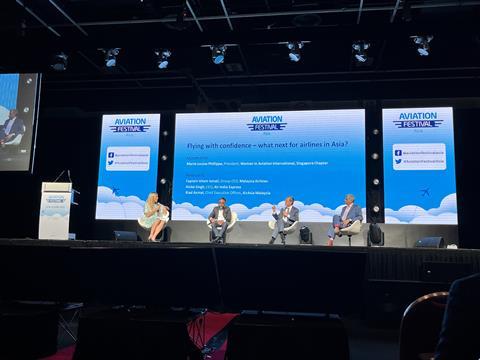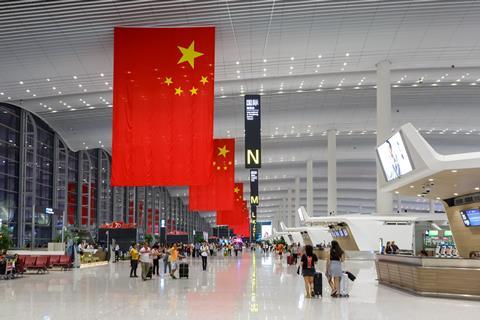While China’s closed international borders will impact recovery efforts, an airline leadership panel believes there are opportunities for growth and recovery elsewhere, including in India, which they tout as a market “everyone should watch” in the near term.
Speaking at the Aviation Festival Asia on 14 June, Malaysia Aviation Group chief Izham Ismail notes that Southeast Asia has traditionally relied on the Chinese travel market. He estimates that pre-pandemic, the proportion of Chinese tourist arrivals to the region stands at more than 76%.

Izham adds that while the country’s borders remain shut in the near-term, airlines - including Malaysia Airlines - “have been refocusing” recovery plans elsewhere.
“We can’t wait for China. Life has to go on,” Izham says, stating that it will “most probably” be only 2023 when China’s borders reopen.
AirAsia Malaysia CEO Riad Asmat, a fellow panellist, says the airline “has been in constant engagement” with Chinese civil aviation authorities and “we hope they can open sooner rather than later”.
Echoing Izham’s sentiments, Riad adds: “But you know as an airline, we don’t put all our eggs into one basket…we will see when [the other markets] open, but in the meantime, we will work with what we have.”
China’s zero-infection policy remains firmly entrenched. It has seen key cities, like Shanghai, placed under onerous lockdowns. Consequently, the country’s international borders remain firmly shut in an attempt to curb the import of any new cases.

The policy has been called “disappointing” by industry body IATA, which also notes that airlines will look to other markets for recovery.
On the Indian market, both Riad and Izham point out the “tremendous opportunity” present. Indian tourist arrivals only accounted for a quarter of pre-pandemic arrivals to Southeast Asia, and both AirAsia Malaysia and Malaysia Airlines are hoping to drive these numbers up.
As Izham puts it: “India is very exciting, in the next five years moving forward. It’s a space everyone should watch. The activities happening in the home ground is very interesting.”
AirAsia’s Riad notes that there is “limited connectivity” to India from Southeast Asia, and that the low-cost airline hopes to continue expanding into the country.
The panel’s third speaker, Air India Express CEO Aloke Singh, points out the advantage of the Indian market.
“In the short-haul international market, which is the space that we’re in, the numbers are large, about 45 million according to our estimates if you look at a radius of about six hours to and from India.”
There is still potential for expansion, says Singh: “We feel that the potential has still not been exploited to the extent that it could…In this part of the world, we haven’t yet scratched the surface and there is enormous room to grow.”


























